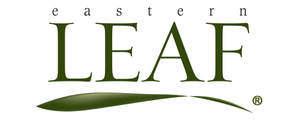
Choosing a Proper Front for your Tree:
3 Considerations
Choosing the front of a tree is one of the most basic concepts in bonsai but one of the hardest to master. Here are the three things we consider when choosing a front.
Nebari - Root Base
The root base of the tree is always the first place you start. Simply remove the soil around the base of the tree to uncover the true root base of the tree. What we want to see is a wide root base with the roots spread to the side. A strong root base will give the tree the appearance of strength and stability. Avoid a narrow sideways stance base.
Movement
The second consideration is the movement of the trunk. We are almost always looking for a good movement in the trunk with twists and turns. Movement is what gives your tree character. We like to choose a front that shows off the most movement. However, pay attention to movement that curves too much toward you ("pigeon breast"). This is unappealing. One trick is to tilt the tree to hide the curve if you are set on having that side as the front.
Taper
Lastly, taper is what will give your tree a balanced and aged look. We want to show the side of the tree that has the most trunk taper from wide to narrow toward the apex of the tree. If you have two sides that you are having difficulty with, consider taper. A bonsai tree tends to look top heavy if there is reverse taper, where the trunk is narrow then gets fat and then narrow again.
It will be rare to find a tree that possesses all the desirable characteristics. If you've found a tree that does all this, then it's a keeper for sure. Otherwise, do your best to choose the front that balances these three considerations the best. There are also tricks and techniques that can help hide or mask imperfections in the tree. These tips can be found in our other articles.
Lastly, branches are the last consideration as they can be grown over time or moved and bent with wire. The branches we cut are typically chose based on the front that we choose, not vice versa.
3 Considerations
Choosing the front of a tree is one of the most basic concepts in bonsai but one of the hardest to master. Here are the three things we consider when choosing a front.
Nebari - Root Base
The root base of the tree is always the first place you start. Simply remove the soil around the base of the tree to uncover the true root base of the tree. What we want to see is a wide root base with the roots spread to the side. A strong root base will give the tree the appearance of strength and stability. Avoid a narrow sideways stance base.
Movement
The second consideration is the movement of the trunk. We are almost always looking for a good movement in the trunk with twists and turns. Movement is what gives your tree character. We like to choose a front that shows off the most movement. However, pay attention to movement that curves too much toward you ("pigeon breast"). This is unappealing. One trick is to tilt the tree to hide the curve if you are set on having that side as the front.
Taper
Lastly, taper is what will give your tree a balanced and aged look. We want to show the side of the tree that has the most trunk taper from wide to narrow toward the apex of the tree. If you have two sides that you are having difficulty with, consider taper. A bonsai tree tends to look top heavy if there is reverse taper, where the trunk is narrow then gets fat and then narrow again.
It will be rare to find a tree that possesses all the desirable characteristics. If you've found a tree that does all this, then it's a keeper for sure. Otherwise, do your best to choose the front that balances these three considerations the best. There are also tricks and techniques that can help hide or mask imperfections in the tree. These tips can be found in our other articles.
Lastly, branches are the last consideration as they can be grown over time or moved and bent with wire. The branches we cut are typically chose based on the front that we choose, not vice versa.
